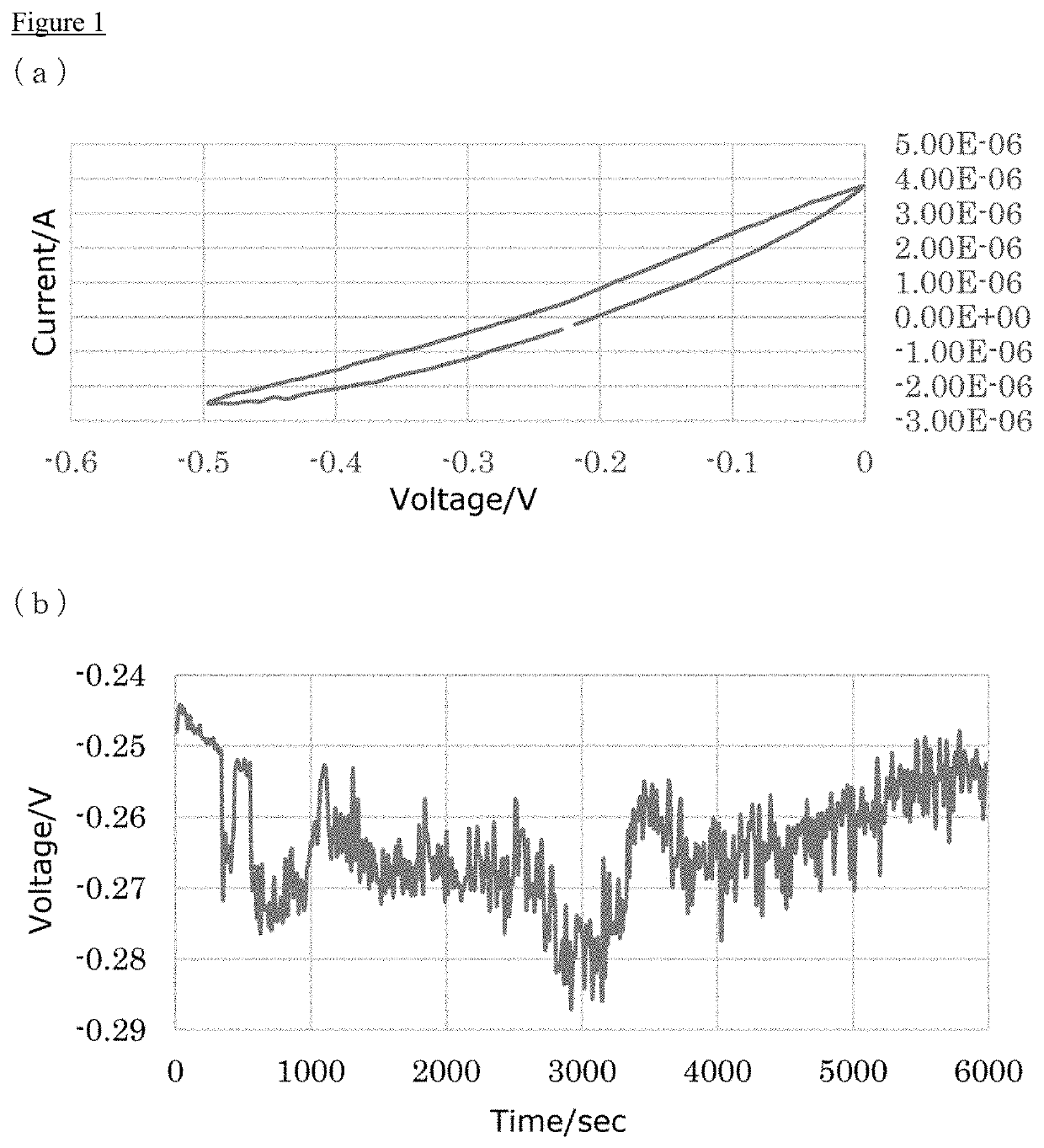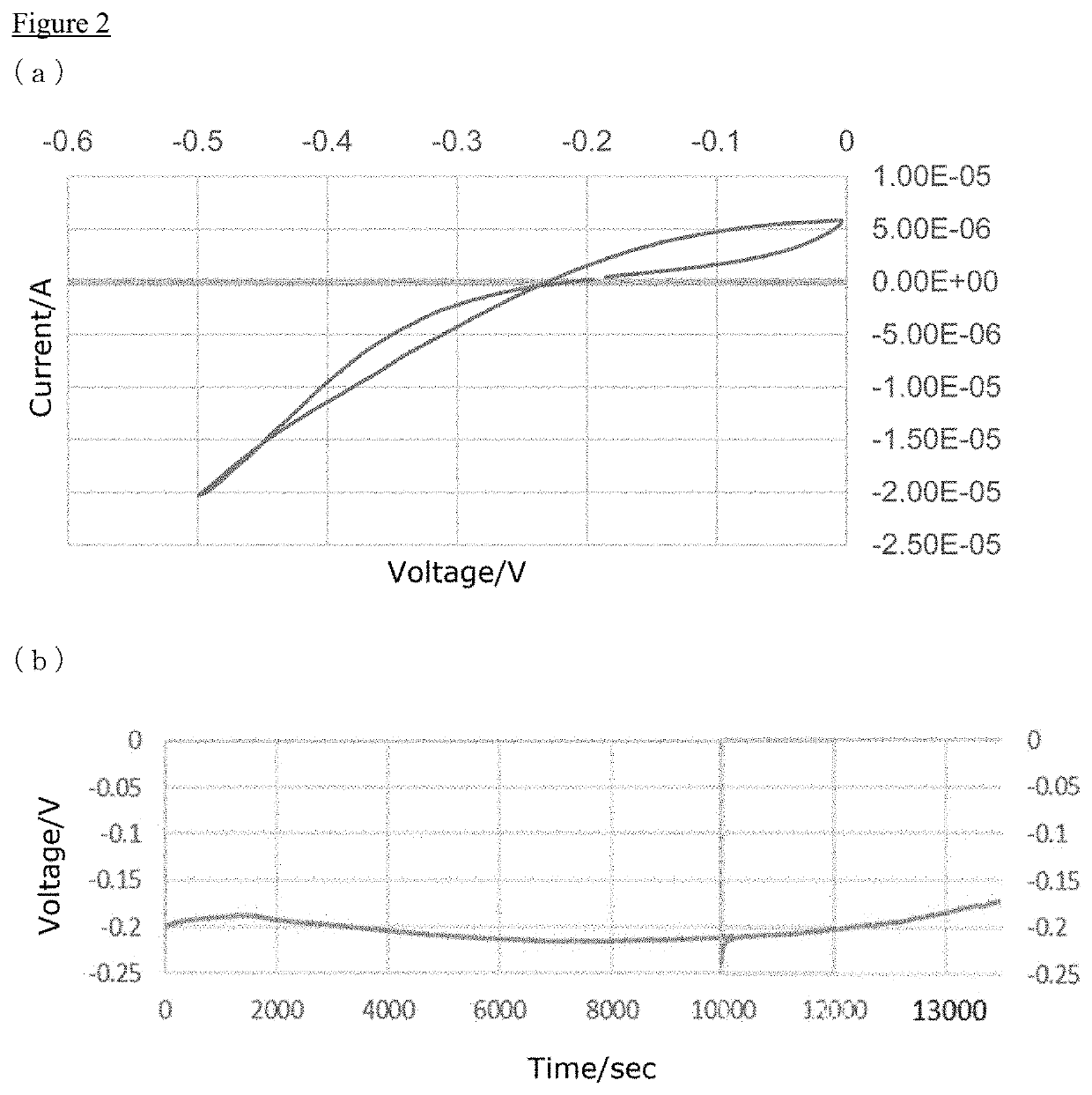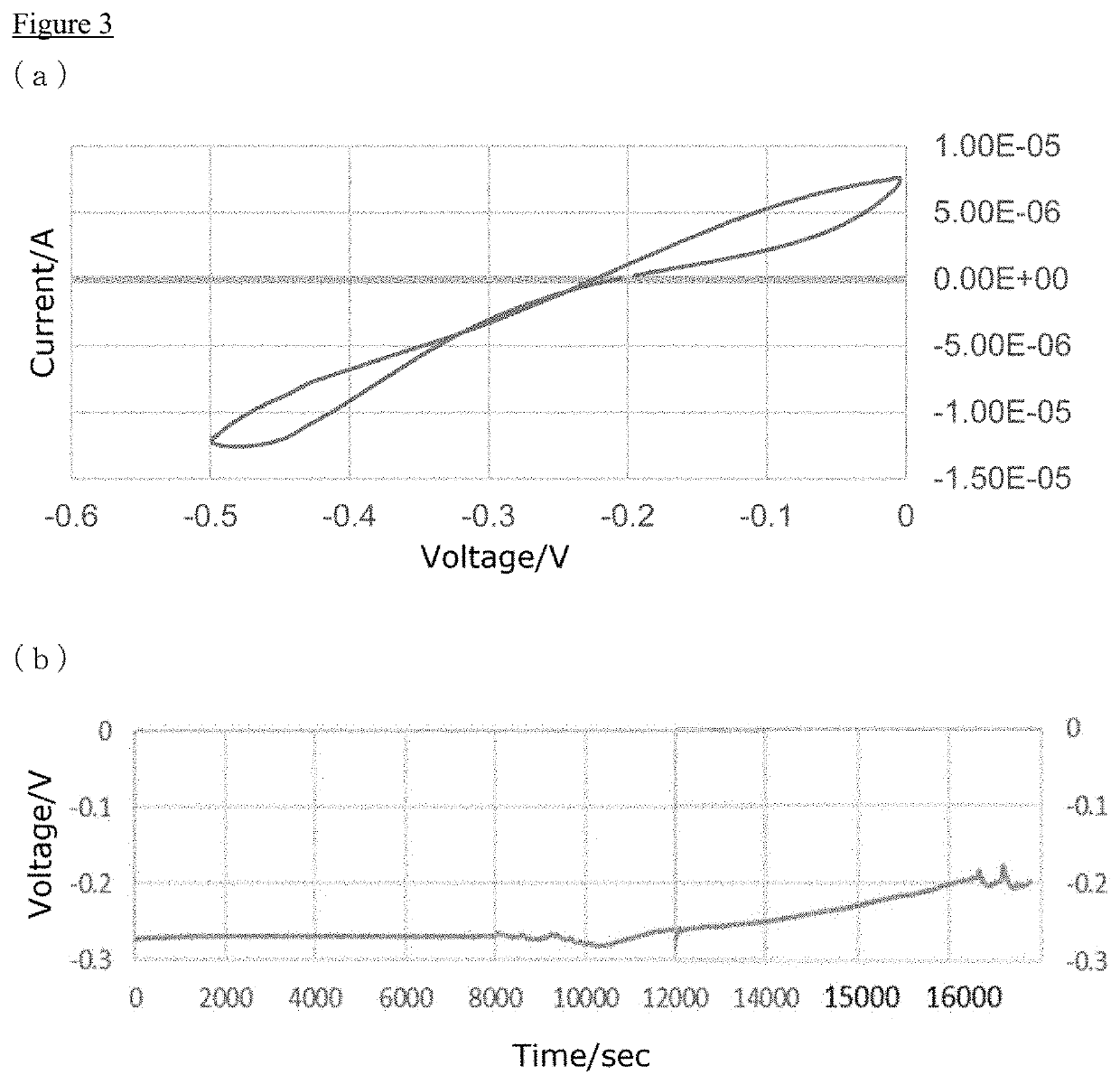Heat-utilizing power generation battery and heat-utilizing power generation method using same
a technology of power generation battery and heat-utilizing power generation, which is applied in the direction of generator/motor, electrical apparatus, and thermoelectric device junction materials, etc., can solve the problems of high price of the semiconductors forming the thermoelectric conversion element, low conversion efficiency, and high operating temperature range, and achieve long-life, stable operation
- Summary
- Abstract
- Description
- Claims
- Application Information
AI Technical Summary
Benefits of technology
Problems solved by technology
Method used
Image
Examples
example 1
[0090]In this example, a thermoelectric cell was prepared using PEG600 as the solid electrolyte and CuCl as the ion source.
[0091]The following working electrode was used. 20 nanometers of Cr was deposited as a binder on n-Si having a thickness of about 0.5 mm, and 2 μm of Ge was deposited thereon, and it was cut into 25×15×0.5 mm.
[0092]As the counter electrode, fluorine-doped tin oxide (FTO, sheet resistance 7Ω / □, Aldrich) cut to a size of 25×15×2.2 mm was used.
[0093]The electrolyte was prepared by applying 0.1 g of PEG600 (Wako) in a mortar, adding CuCl (0.01 g), and stirring for 10 minutes. The resulting electrolyte (1 μL) was dropped onto the germanium of the working electrode. A thermally-resistant insulating double-sided tape (Kapton tape with 5 mm holes) was used as a spacer to bond the germanium side of the working electrode and the FTO of the counter electrode. That is, the electrode area of the power generation part was a circle with a diameter of 5 mm, i.e., 78.5 square mi...
example 2
[0095]In this example, the procedure described in Example 1 was repeated except for using acetonitrile (ACN) as the additive, to prepare a thermoelectric cell.
[0096]0.1 g of PEG600 was applied in a mortar, and CuCl (0.01 g) and ACN (0.25 mL) as the additive were added thereto, and then ACN was evaporated by allowing to stand at 80° C. for 20 minutes, to prepare the electrolyte. The results are shown in Table 1 and FIG. 2.
[0097]Power generation characteristics with an open circuit voltage of about 0.2 V and a short-circuit current of about 5 microamperes were observed (FIG. 2a). A stable discharge at about 0.2V and 10 nanoamperes was continued for about 4 hours. (FIG. 2b).
example 3
[0098]In this example, the procedure described in Example 2 was repeated except for using PEG2000 instead of PEG600 as the solid electrolyte, to prepare a thermoelectric cell.
[0099]0.1 g of PEG2000 was applied in a mortar, and CuCl (0.01 g) and ACN (0.5 mL) as the additive were added thereto, and the whole was stirred for 10 minutes at 80° C. ACN was evaporated by allowing to stand at 80° C. for 20 minutes, to prepare the electrolyte. The results are shown in Table 1 and FIG. 3.
[0100]Power generation characteristics with an open circuit voltage of about 0.2 V and a short-circuit current of 7 microamperes were observed (FIG. 3a). A stable discharge at 10 nanoamperes was continued for about 4.5 hours. (FIG. 3b).
PUM
| Property | Measurement | Unit |
|---|---|---|
| inner diameter | aaaaa | aaaaa |
| temperature | aaaaa | aaaaa |
| temperature | aaaaa | aaaaa |
Abstract
Description
Claims
Application Information
 Login to View More
Login to View More - R&D
- Intellectual Property
- Life Sciences
- Materials
- Tech Scout
- Unparalleled Data Quality
- Higher Quality Content
- 60% Fewer Hallucinations
Browse by: Latest US Patents, China's latest patents, Technical Efficacy Thesaurus, Application Domain, Technology Topic, Popular Technical Reports.
© 2025 PatSnap. All rights reserved.Legal|Privacy policy|Modern Slavery Act Transparency Statement|Sitemap|About US| Contact US: help@patsnap.com



